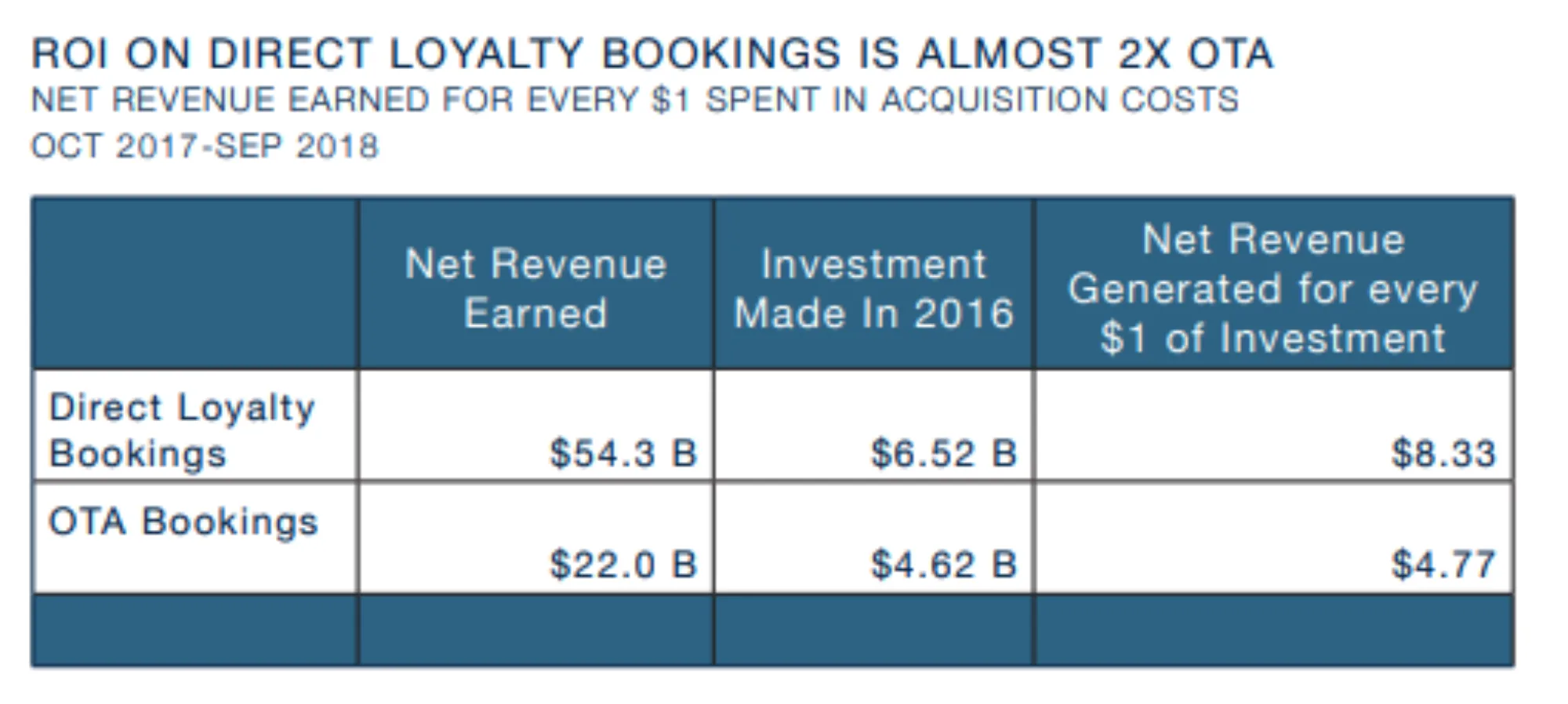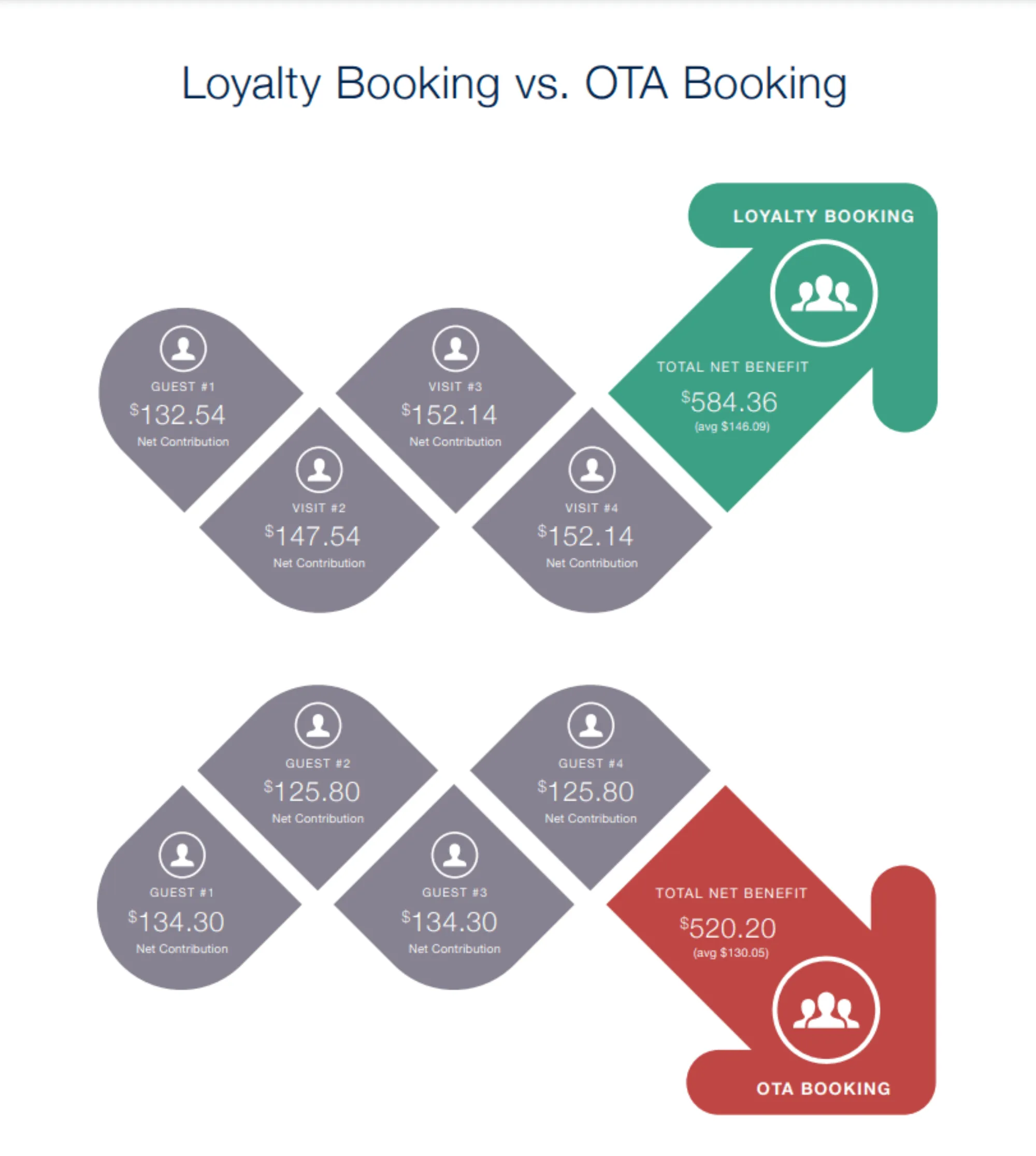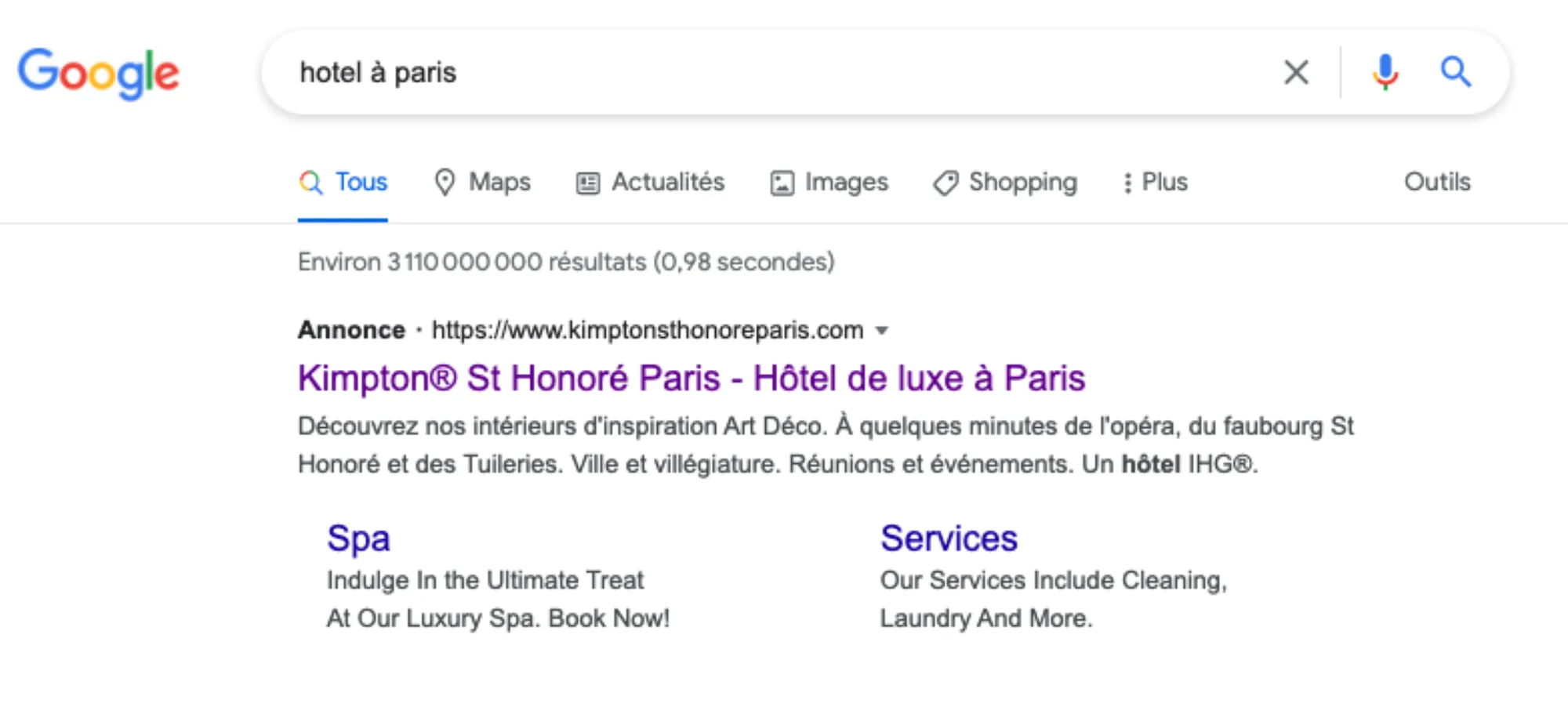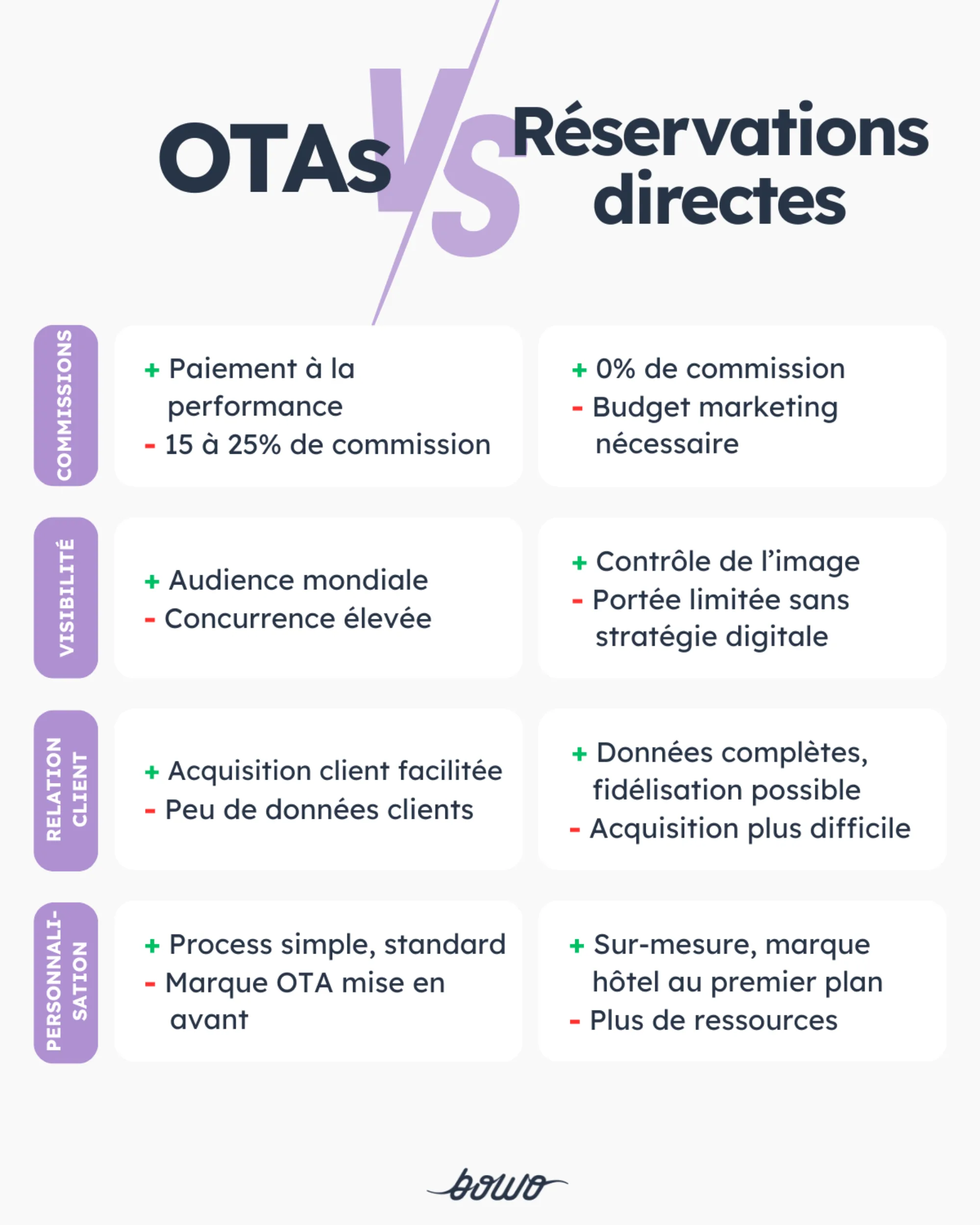The vast majority of hoteliers rely on OTAs (Online Travel Agencies) to sell their rooms. Platforms like Booking, Expedia or Hotels.com have become unavoidable. They generate significant booking volumes… but at what cost?
Commissions, sometimes ranging from 15% to 22%, eat into your margins. Yet, you need them to fill rooms — especially during low season.So how do you strike a balance? How do you leverage their power without becoming entirely dependent? And most importantly, how can you take back control of your bookings?
This article provides practical insights to better understand the role of OTAs, assess their true impact, and implement effective strategies to boost your direct bookings.
>> Download your free white paper "How to market experiences in the hotel industry"
What is an OTA?
OTAs (Online Travel Agencies) are platforms like Booking, Expedia or Hotels.com that allow travelers to book hotels, flights or activities with ease. For hoteliers, they offer instant visibility and help drive occupancy — but at the cost of hefty commissions, sometimes up to 22% per booking.OTAs Charge 15–22% Commissions: But What Do You Get in Return?
Yes, OTAs take a significant share of each reservation — on average 15% to 22%.
This may seem excessive, but in exchange, they provide several benefits:
- Massive online visibility on search engines — many of your guests likely discover you thanks to OTAs.
- Effortless access to international markets.
- Advanced conversion technologies, designed to keep the user on the booking path.
- Powerful marketing tools including big data, geo-targeting, behavioral segmentation, AI, and predictive analytics — helping them show the right offer to the right traveler at the right time.

In short, OTAs invest heavily to convert online users into paying guests. But is it really profitable for you?
A study by Kalibri Labs (based on 18,000 hotels in the U.S.) found that direct bookings are 12.5% more profitable than OTA bookings — even after factoring in advertising costs like Google Ads and potential discounts.Loyalty programs were found to be nearly twice as profitable as OTA bookings. These guests not only return more often but also tend to spend more (upsells, extended stays, etc.).
What’s more, OTAs make it harder to build guest relationships. When a guest books through an OTA, you often get zero information. No name, no email. It’s nearly impossible to personalize their stay or build loyalty.

Loyalty booking vs OTA booking
Reduce Your Dependence on OTAs by Fostering Guest Loyalty
Encouraging guests to book directly on your website means lowering the commissions paid to intermediaries and reinvesting that budget into more strategic and long-term actions.
Used to losing 15–20% in commissions? Try redirecting half of that amount into tailored guest marketing.
Building a strong relationship with your guest should be your top priority. The goal: bring them back — again and again.
Here are a few actionable ideas
- Prioritized check-in and service for returning guests.
- Faster response and resolution of complaints.
- Personal touches like upgrades, welcome gifts, or late check-outs.
- Exclusive offers for loyal guests (VIP clubs, promo codes, private packages).
- Anticipation of guest needs — like room service preferences, early breakfast, quiet rooms, etc.
Ultimately, the more loyal the guest, the more value you should offer in return. A guest returning for the tenth time shouldn’t be treated like a first-timer. You need to invest more — and it will pay off.
👉 What you used to lose in OTA commissions, you can reinvest into personalized guest benefits and loyalty marketing. The more appreciated and recognized the guest feels, the more likely they are to book directly.
Key Strategies to Boost Your Direct Bookings
While loyalty is a powerful lever, it must be paired with other efforts to truly reduce OTA dependence. Here are the essential pillars to activate:
1. Hotel Website vs OTAs: Winning the Guest’s Final Decision
Google reports that 52% of travelers visiting OTAs like Booking, Expedia or TripAdvisor also visit the hotel’s website before making a reservation.
That makes your site the final decision-maker — it must inspire trust and convert instantly.
Focus on these five criteria:- Competitive pricing or exclusive direct offers.
- Immersive and authentic photos.
- Social proof (reviews, TripAdvisor score).
- Strong location highlights.
- A seamless UX — fast, intuitive booking flow.
According to studies, your website has less than 30 seconds to convince a visitor to book. Do it well, and you have a 75% chance they’ll confirm directly.
🛠 Tip: Conduct a full website audit — is it truly conversion-ready?

2. Google Ads & Remarketing Campaigns
You know your target audience — now make sure you show up when they search.
Invest in Google Ads campaigns targeting strategic keywords before they land on Booking.com.
Dedicate the largest share of your ad budget to remarketing, which allows you to reach users who visited your site but didn’t book. These guests already showed interest — and that makes them more likely to convert with a little nudge.
3. Organic Communication & Social Media
Instagram, Facebook, LinkedIn (for B2B/MICE), even YouTube — your social media accounts are your emotional storefront.Use them to highlight your hotel experience: guest stories, behind-the-scenes content, staff spotlights, events… Drive traffic to your site through posts, stories, and links in bio.
Be consistent, spark conversations in comments or DMs, and give people a reason to follow you: VIP offers, limited access deals, early previews.
Your CRM or Guest App can also help you collect real-time feedback during the stay, harvest user-generated content, and repurpose reviews and photos to strengthen social proof.
👉 See also: our article on hospitality in the age of digital communication.
4. Play with price and package strategies
Give your website visitors something they can’t find on OTAs:
- Curated packages: “Romantic Getaway”, “Cruise & Park”, “Spa & Brunch”.
- Exclusive promo codes for newsletter subscribers or loyalty members.
- Personalized offers via WhatsApp or SMS for returning guests.
Play with urgency and exclusivity — limited-time offers work well. Adapt packages to the season or local events. A flexible booking engine, strong visuals, and clear value will make all the difference.
A happy, recognized, and pleasantly surprised guest won’t shop around — they’ll come straight to you.

OTAs, Direct Sales, Marketing: It’s All About the Right Mix
For most hotels, completely ditching OTAs isn’t realistic. But reducing your dependence on them? That’s not only achievable — it’s essential.
By investing in a high-performing website, a smart CRM strategy, a memorable guest experience, and coherent digital presence, you regain control.
And every direct booking means more margin, more guest data, and more freedom.
So — are you ready to take back control of your hotel sales?
Similar articles
